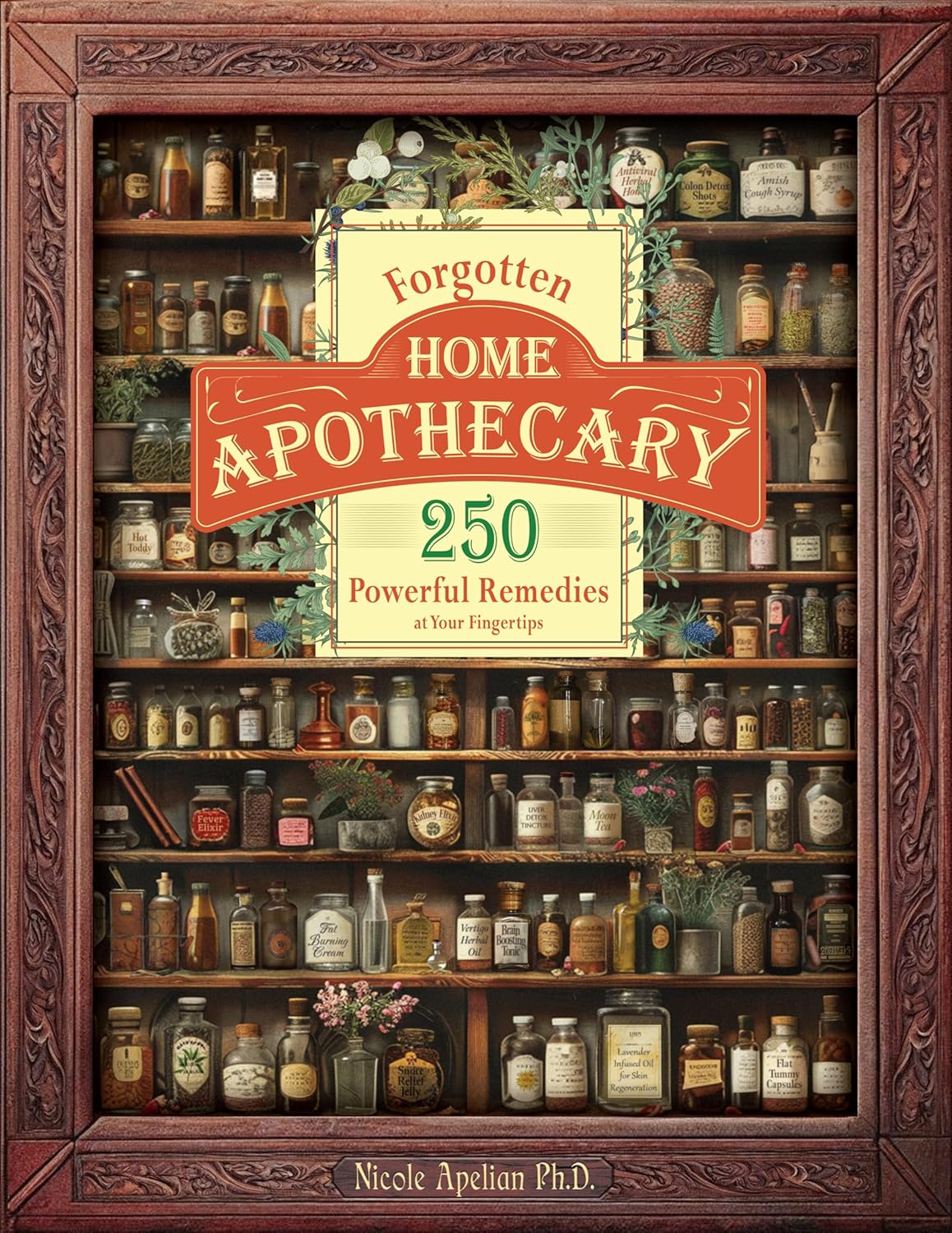Introduction
Dr. Nicole Apelian’s Forgotten Home Apothecary: 250 Powerful Remedies at Your Fingertips has been making waves in the herbalism community. As someone passionate about natural remedies and herbal medicine, I decided to explore this book and share my thoughts. In this review, I’ll cover everything from the book’s content and usability to its pros, cons, and how it compares to other popular herbal medicine books.
Where to Buy the Book
The book is exclusively available through Dr. Apelian’s official website. However, some readers have reported issues with credit card transactions being flagged as fraudulent. To avoid this, consider using a debit card or informing your credit card company in advance. Be cautious of knockoff versions sold on platforms like eBay or Amazon, as these may contain errors, blurred text, or incorrect information. Always look for the author’s name on the cover to ensure authenticity.
What’s Inside the Book?
Forgotten Home Apothecary is a recipe-style guide to herbal remedies, featuring 250 solutions for common health issues. The book is organized into categories such as:
- Circulatory issues
- Respiratory problems
- Digestive ailments
- Skin conditions
- And more
Each remedy includes clear instructions, dosages, and helpful side notes like “seek medical attention if symptoms persist.” The book also features color pictures and a clean, user-friendly layout. However, some readers have noted that the book is thinner than expected. While it contains 250 remedies, it lacks the depth and detailed backstory found in more comprehensive herbal guides.
Pros of the Book
- Beginner-Friendly: The book is perfect for those new to herbalism, offering straightforward recipes and step-by-step instructions.
- Well-Organized: The categorization by health issues makes it easy to find remedies for specific ailments.
- Visual Appeal: The color pictures and clean layout make the book visually appealing and easy to navigate.
- Practical Recipes: The remedies are simple to prepare, using ingredients that are often readily available.
Cons of the Book
- Lacks Depth: The book focuses on recipes but doesn’t provide in-depth information about herbs, their side effects, or interactions with medications.
- No Plant Identification: It doesn’t include pictures of the actual plants, which could be a drawback for those foraging or growing their own herbs.
- Pricey for Its Size: At around $50, some readers may find it expensive compared to more comprehensive herbal books.
- Limited Research: The book doesn’t delve into the science or history behind the remedies, which may disappoint more advanced herbalists.
Comparison to Other Herbal Books
Here’s how Forgotten Home Apothecary compares to other popular herbal medicine books:
- Herbal Antibiotics by Stephen Harrod Buhner: A more technical book, ideal for advanced users. It focuses on the science behind herbal antibiotics but lacks the beginner-friendly approach of Dr. Apelian’s book.
- Amy Fewell’s Herbal Books: These books offer great instructions and color pictures but lack the depth and backstory found in other guides.
- Rosemary Gladstar’s Books: Comprehensive and detailed, with information on medicinal uses, growing tips, and recipes. A top choice for serious herbalists.
- Encyclopedia of Herbal Medicine by Andrew Chevallier: A must-have for anyone serious about herbalism. It includes detailed plant profiles, traditional uses, and scientific names, making it a more comprehensive resource.
Practical Tips for Using the Book
If you decide to purchase Forgotten Home Apothecary, here are some tips to get the most out of it:
- Do Your Own Research: While the book provides recipes, it’s essential to research the herbs’ side effects and interactions with medications.
- Start Small: Begin with simple remedies like teas or salves before moving on to more complex preparations.
- Keep Ingredients Separate: Instead of pre-mixing remedies, store individual herbs and ingredients separately. This allows you to customize remedies as needed.
- Supplement with Other Resources: Consider pairing this book with more comprehensive guides like Rosemary Gladstar’s works or the Encyclopedia of Herbal Medicine.
Who Is This Book For?
Forgotten Home Apothecary is ideal for:
-
- Beginners looking for an easy-to-follow introduction to herbal remedies.
- Those who prefer a recipe-style guide with clear instructions.
- People interested in natural remedies for common health issues.
However, advanced herbalists or those seeking in-depth information may find the book lacking.
Final Thoughts
Forgotten Home Apothecary is a solid choice for beginners seeking a practical, recipe-style guide to herbal remedies. Its user-friendly layout and colorful design make it appealing, but it lacks the depth and plant identification features found in more comprehensive guides. If you’re serious about herbalism, consider supplementing this book with others like Rosemary Gladstar’s works or the Encyclopedia of Herbal Medicine. Ultimately, the book is worth the investment if you’re looking for quick, easy-to-follow remedies. Just remember to do your own research on herbs, especially if you have underlying health conditions or are taking medications.
